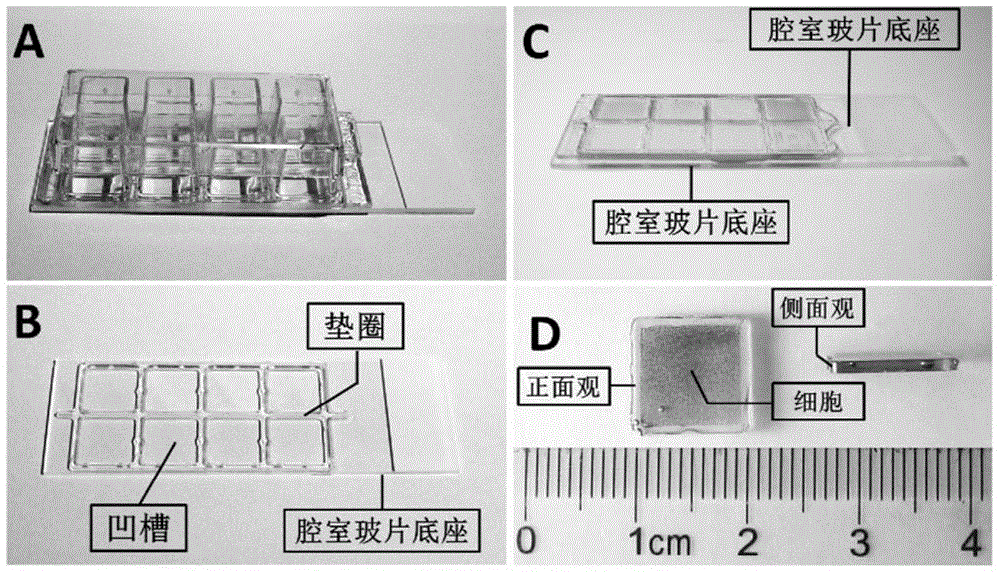Positioning ultrathin slice method for pathologic cell infected with virus
A technology for ultra-thin sectioning and diseased cells, which is applied in the preparation of test samples and sampling devices, etc. It can solve the problems of inaccurate positioning, random distribution of target cells, and low detection efficiency, so as to simplify operating procedures and shorten sample preparation time , the effect of reducing randomness
- Summary
- Abstract
- Description
- Claims
- Application Information
AI Technical Summary
Problems solved by technology
Method used
Image
Examples
Embodiment 1
[0069] 1. Inoculation of Human Adenovirus
[0070] When subcultured on the Lab-Tek Chamber slide TM When the HEK293 cells in the chamber slide wells of the system (177445) grow to about 80% abundance, inoculate Ad5 on HEK293 cells with cell maintenance medium (DMEM containing 2% FBS) at MOI=0.1. 24-48 hours after inoculating the virus, when the cells develop pathological changes, fix the cells in situ with 2% PFA-2.5% GA (0.1M Caco buffer, pH7.4) at 4°C for 10 minutes; Dehydrate the cells with 90%, 100%, and 100% ethanol for 5 minutes each time; then infiltrate the cells with ethanol:resin ratios of 1:1, 1:4, and 100% resin for 30 minutes each time.
[0071] 2. Resin embedding
[0072] After infiltrating the cells with the resin, remove the plastic holder of the chamber slide, keep the silicone gasket, add the resin into the square groove formed by the gasket, make the resin plane level with the height of the gasket, and cover the chamber slide base on the gasket , to seal...
Embodiment 2
[0094] 1. Inoculation of influenza virus
[0095] When subcultured on the Lab-Tek Chamber slide TM When MDCK cells grow to about 80% abundance in the chamber slide well of system (177445), inoculate influenza virus Influenza A virus (H1N1 ) on MDCK cells. 24-48 hours after inoculating the virus, when the cells develop pathological changes, fix the cells in situ with 2% PFA-2.5% GA (0.1M Caco buffer, pH7.4) at 4°C for 10 minutes; Dehydrate the cells with 90% and 100% ethanol for 5 minutes each time; then infiltrate the cells with ethanol:resin ratios of 1:1, 1:4 and 100% resin for 30 minutes each time.
[0096] 2. Resin embedding
[0097] After infiltrating the cells with the resin, remove the plastic holder of the chamber slide, keep the silicone gasket, add the resin into the square groove formed by the gasket, make the resin plane flush with the height of the gasket, and take a clean glass slide to cover the gasket , to seal the resin. Using a microwave processor (PELC...
PUM
| Property | Measurement | Unit |
|---|---|---|
| thickness | aaaaa | aaaaa |
Abstract
Description
Claims
Application Information
 Login to View More
Login to View More - R&D
- Intellectual Property
- Life Sciences
- Materials
- Tech Scout
- Unparalleled Data Quality
- Higher Quality Content
- 60% Fewer Hallucinations
Browse by: Latest US Patents, China's latest patents, Technical Efficacy Thesaurus, Application Domain, Technology Topic, Popular Technical Reports.
© 2025 PatSnap. All rights reserved.Legal|Privacy policy|Modern Slavery Act Transparency Statement|Sitemap|About US| Contact US: help@patsnap.com



